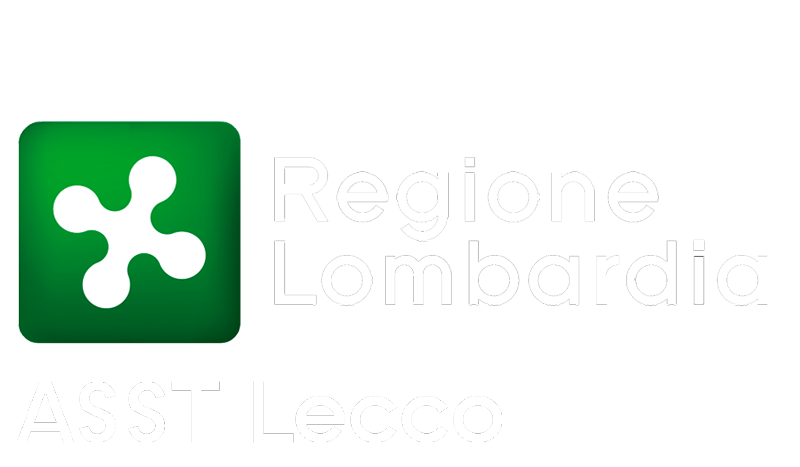
brain art

BRAIN ART PROJECT

Brain Art is an interregional project between Italy and Swiss. It proposes an innovative approach to the treatment of patients affected by neurological diseases, in order to promote their social inclusion using technologies applicable in both artistic and neurological field. The development of technological instruments to be used in clinical field for rehabilitation, stimulation and maintenance of cognitive abilities, as well as to make easily available art installations and cultural spaces, such as museums, to people suffering from mental diseases in order to reduce social stigma affecting people with mental health problems.
This project sees the collaboration between Need Institute and other Institutions active in social services as well as in cultural and artistic field.
NEED’s main objective is the promotion of medical research for the treatment and rehabilitation of neurological diseases therefore plays the role of scientific supervisor for evaluating the effectiveness of planned measures.
The Italian leader for artistic activities is CRAMS (Research Centre for Arts, Music and Entertainment). Since 1989 CRAMS has been involved in art therapy, establishing one of the first training schools for art and music therapy. The Swiss leader is, instead, Pro Senectute, which is the main service provider for the elderly in Switzerland. Pro Senectute Ticino e Moesano is a foundation active in Canton Ticino, whose goal is improving and maintaining elderly physical and mental well-being through the provision of services and activities supporting ageing in place.
Another partner involved is ATS Lecco-Monza Brianza which is the public entity appointed by regional health service to the governance of social structures receiving people with mental and Alzheimer’s diseases.
The challenge of BrainArt is reducing stigma toward dementia. The project’s turning point is supporting caregivers and increasing public awareness, in order to struggle social isolation affecting people with dementia and improving their quality of life. Prototyping this technology allows us to implement a new model of care and new artistic pathways to enhance patients caregivers quality of life. According to data concerning the action area of the cooperation programme, it appears that both sides are concerned by a gradual ageing of the population. Ageing index in Lombardy as of 2016 (Istat) is of 155,7 points while on the Ticino side is between 140 and 160 points. According to Demenzbarometer research (ZfG 2012), about 60% of people surveyed reported having been in close contact with mental disease (half of them because of an immediate family member) while figures estimate that in Lombardy 13% of the over 65 experience early symptoms of dementia (CGIL-IRES 2013 study, Alzheimer in Lombardy elements of reflection).Putting together these data we can easily understand how healthy aging is a relevant aspect both numerically and socially. In short, BrainArt aims at enhancing good practices exchange; promoting pilot experiences, development and exchange of ideas; supporting experimentation of social inclusion; raising awareness among the communities in both territories; encouraging positive interaction between art and disease; highlighting social impact on local communities; training RSA operators and institutions and fostering public entities involvement and dissemination.
This project primary beneficiaries are fragile elderly people (over 65) with cognitive impairment.
One of the necessary condition to be accepted to day care centres (where this technology will be tested) is a diagnosis of dementia. Families of people affected by dementia will be involved too. They are part and parcel of the project which aims at improving their quality life in terms of little stress and best interactions with their loved one. Carers are another of the beneficiaries of this project, due to the great impact of this instrument on the patient’s quality of life and consequently on theirs. As for project activities in socio-cultural fields they will be addressed to a wider audience, directly and indirectly benefiting from them, because of the innovative approach toward social inclusion of the elderly affected by cognitive impairment and dementia, in order to break down cultural barriers and open a not often easily accessible cultural venues, like museums, to these fragile people. The work with museum staff, artists and users of cultural spaces rightly consists in increasing awareness and reducing stigma related to dementia.
Many of the different stakeholders present in the area will be involved in this project. In particular local authorities and departments of competence of Canton Ticino will benefit of the implementation on the territory of a service responding to part of the recommendations included in the Cantonal strategy on dementias. The activity (especially the one inside the museum) would represent the instrument to destigmatize the disease and make people aware of the issue. All day care centres on the territory could extend the range of the activities proposed inside their structure, including the proposals of this project. Moreover the Canton will be the first place to implement the activity in both CDT and museums, becoming a success story, an inspiration to all those who intend to follow the same path. Those in charge of managing the territorial healthcare system are the indirect recipients of the project, because the improvement of interaction between the older person with cognitive impairment and his caregiver also improves quality of life of both and social inclusion of the elder. Acting this way ATS implements with its territorial network a new model of care, improving healthy and active ageing according to OMS and UE recommendations. Accordingly, the community is one of the stakeholders of this research in consideration of the gradual growth of this type of neurodegenerative diseases, only partially explained by the phenomenon of ageing of the population. In socio-cultural field the institutions, museums in the first place, can implement BrainArt technology and methodology inside their artistic planning, ensuring a much wider offer to their users.
PROGETTO BRAIN ART


Brain Art is an interregional project between Italy and Swiss. It proposes an innovative approach to the treatment of patients affected by neurological diseases, in order to promote their social inclusion using technologies applicable in both artistic and neurological field. The development of technological instruments to be used in clinical field for rehabilitation, stimulation and maintenance of cognitive abilities, as well as to make easily available art installations and cultural spaces, such as museums, to people suffering from mental diseases in order to reduce social stigma affecting people with mental health problems.
This project sees the collaboration between Need Institute and other Institutions active in social services as well as in cultural and artistic field.
NEED’s main objective is the promotion of medical research for the treatment and rehabilitation of neurological diseases therefore plays the role of scientific supervisor for evaluating the effectiveness of planned measures.
The Italian leader for artistic activities is CRAMS (Research Centre for Arts, Music and Entertainment). Since 1989 CRAMS has been involved in art therapy, establishing one of the first training schools for art and music therapy. The Swiss leader is, instead, Pro Senectute, which is the main service provider for the elderly in Switzerland. Pro Senectute Ticino e Moesano is a foundation active in Canton Ticino, whose goal is improving and maintaining elderly physical and mental well-being through the provision of services and activities supporting ageing in place.
Another partner involved is ATS Lecco-Monza Brianza which is the public entity appointed by regional health service to the governance of social structures receiving people with mental and Alzheimer’s diseases.
The challenge of BrainArt is reducing stigma toward dementia. The project’s turning point is supporting caregivers and increasing public awareness, in order to struggle social isolation affecting people with dementia and improving their quality of life. Prototyping this technology allows us to implement a new model of care and new artistic pathways to enhance patients caregivers quality of life. According to data concerning the action area of the cooperation programme, it appears that both sides are concerned by a gradual ageing of the population. Ageing index in Lombardy as of 2016 (Istat) is of 155,7 points while on the Ticino side is between 140 and 160 points. According to Demenzbarometer research (ZfG 2012), about 60% of people surveyed reported having been in close contact with mental disease (half of them because of an immediate family member) while figures estimate that in Lombardy 13% of the over 65 experience early symptoms of dementia (CGIL-IRES 2013 study, Alzheimer in Lombardy elements of reflection).Putting together these data we can easily understand how healthy aging is a relevant aspect both numerically and socially. In short, BrainArt aims at enhancing good practices exchange; promoting pilot experiences, development and exchange of ideas; supporting experimentation of social inclusion; raising awareness among the communities in both territories; encouraging positive interaction between art and disease; highlighting social impact on local communities; training RSA operators and institutions and fostering public entities involvement and dissemination.
This project primary beneficiaries are fragile elderly people (over 65) with cognitive impairment. One of the necessary condition to be accepted to day care centres (where this technology will be tested) is a diagnosis of dementia. Families of people affected by dementia will be involved too. They are part and parcel of the project which aims at improving their quality life in terms of little stress and best interactions with their loved one. Carers are another of the beneficiaries of this project, due to the great impact of this instrument on the patient’s quality of life and consequently on theirs. As for project activities in socio-cultural fields they will be addressed to a wider audience, directly and indirectly benefiting from them, because of the innovative approach toward social inclusion of the elderly affected by cognitive impairment and dementia, in order to break down cultural barriers and open a not often easily accessible cultural venues, like museums, to these fragile people. The work with museum staff, artists and users of cultural spaces rightly consists in increasing awareness and reducing stigma related to dementia.
Many of the different stakeholders present in the area will be involved in this project. In particular local authorities and departments of competence of Canton Ticino will benefit of the implementation on the territory of a service responding to part of the recommendations included in the Cantonal strategy on dementias. The activity (especially the one inside the museum) would represent the instrument to destigmatize the disease and make people aware of the issue. All day care centres on the territory could extend the range of the activities proposed inside their structure, including the proposals of this project. Moreover the Canton will be the first place to implement the activity in both CDT and museums, becoming a success story, an inspiration to all those who intend to follow the same path. Those in charge of managing the territorial healthcare system are the indirect recipients of the project, because the improvement of interaction between the older person with cognitive impairment and his caregiver also improves quality of life of both and social inclusion of the elder. Acting this way ATS implements with its territorial network a new model of care, improving healthy and active ageing according to OMS and UE recommendations. Accordingly, the community is one of the stakeholders of this research in consideration of the gradual growth of this type of neurodegenerative diseases, only partially explained by the phenomenon of ageing of the population. In socio-cultural field the institutions, museums in the first place, can implement BrainArt technology and methodology inside their artistic planning, ensuring a much wider offer to their users.
PARTNER DI PROGETTO








